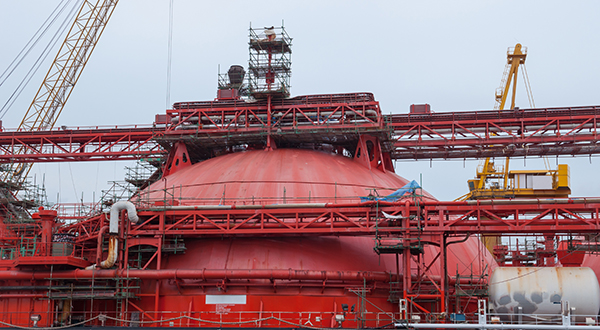Natural gas, the cleanest and the least carbon-intensive fossil fuel, is expected to play a key role in the transition to a cleaner and more flexible energy system, according to the US International Energy Agency’s (IEA) latest gas security review.
As explained, the currently oversupplied gas market and low price environment have resulted in renewed growth of natural gas use for power generation and industrial activities in mature gas economies as well as in newly developing gas markets. However, such a comfortable situation does not prevent security of supply concerns and issues, as shown over the past year through different events.
The IEA launched the first annual Global Gas Security Review (GGSR) in 2016 to identify and analyse some critical elements such as physical production flexibility of the LNG infrastructure and flexibility in contractual arrangements. This year’s report updates the major findings regarding these two crucial elements of global gas security and aims to deepen analysis by introducing additional concepts and metrics to develop a more comprehensive assessment of global gas security of supply.
Highlightts
- Security of supply remains a live issue
On the importers’ side, southern European countries experienced stressed situations in natural gas and power markets during the winter of 2016-17, which led to triggering emergency response mechanisms in several countries. Although no gas or power outages were experienced in any of the affected countries, prices rose sharply and some demand-side measures had to be adopted, showing that even in mature and well-interconnected markets, unexpected shocks can still put strong pressure on physical balancing. Such incidents remind us that security of supply cannot be taken for granted.
- Volume flexibility in LNG infrastructure is improving gradually
This year’s report finds that the situation is gradually improving. A combination of capacity increase from new plants, a slight decrease in off-line capacity, and slower demand expansion result in lower liquefaction utilisation rates: 96% in 2015, 95% in 2016, and an anticipated 87% for 2017 — thus increasing the potential for LNG supply response in case of tightness. It has to be noted, however, that despite the increased liquefaction capacities relative to LNG demand, upswing LNG production capacities remain modest.
- LNG trade flexibility keeps on improving
This report’s updated analysis of new signed contracts shows clear evidence of contractual structures becoming less rigid – this trend is evidenced by the growing share of flexible destination contracts as well as by the decrease in duration. The current well-supplied market is obviously the driver behind such a trend, providing opportunities to achieve more flexible market arrangements and new pricing systems that reflect regional supply and demand balance.
- Significant policy developments in gas security of supply
Recent updates on energy policies, such as European Union’s Security of Gas Supply Regulation, Japan’s emergency policy measures, and Australia Domestic Gas Security Mechanism, show the importance of gas security of supply concerns, calling for frameworks ensuring co-ordinated actions among different stakeholders to provide timely and adequate response to gas security of supply issues and emergencies.
- Assessing LNG flexibility needs with an analysis of types of LNG buyers
LNG market expansion to an increasing number of countries and territories – 38 with LNG import terminals in 2016, growing to 47 by 2022 – is accompanied by greater differentiation among buyers, according to their domestic market requirements. In this report, an analysis of types of LNG buyers is presented in which the procurement strategies of the different players are analysed.
This approach defines four types of buyers, depending on their respective shares of LNG in natural gas supply and of long-term contracts within LNG supply. It ranges from markets almost fully dependent on LNG supplies (Type 1) to new importers where short-term supply is the rule and consumption is driven by fuel competitiveness (Type 4).

Concluding, the report underlines that the global gas market is reshaping to a more fragmented and interconnected structure, with greater needs for flexibility. At the same time, the LNG overcapacity is expected to ebb, with an anticipated retightening of the supply demand balance. This changing environment of increased interdependence between markets is likely to bring new security of supply challenges to both mature and new importers that will require adapted policy responses.
Explore more by reading IEA’s full report:
































































